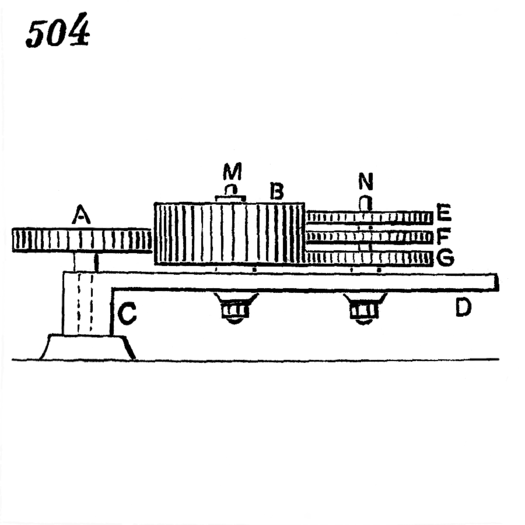504. “Ferguson’s mechanical paradox,” designed to show a curious property of the epicyclic train. The wheel, A, is fixed upon a stationary stud about which the arm, C, D, revolves. In this arm are two pins, M, N, upon one of which is fitted loosely a thick wheel, B, gearing with A, and upon the other are three loose wheels, E, F, G, all gearing with B. When the arm, C, D, is turned round on the stud, motion is given to the three wheels, E, F, G, on their common axis, viz., the pin, N; the three forming with the intermediate wheel, B, and the wheel, A, three distinct epicyclic trains. Suppose A to have twenty teeth, F twenty, E twenty-one, and G nineteen; as the arm, E, C, D, is turned round, F will appear not to turn on its axis, as any point in its circumference will always point in one direction, while E will appear to turn slowly in one and G in the other direction, which—an apparent paradox—gave rise to the name of the apparatus.
